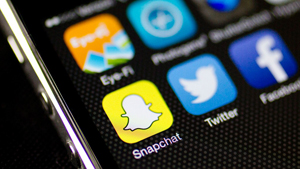London, May 19: Instagram and Snapchat are the most detrimental to young people's mental health and wellbeing, according to a new report on social media platforms which also found that YouTube had the most positive effect.
 The new report by Royal Society for Public Health (RSPH) in the UK examined the positive and negative effects of social media on young people's health.
The new report by Royal Society for Public Health (RSPH) in the UK examined the positive and negative effects of social media on young people's health.
Researchers conducted a survey of almost 1,500 people (aged 14-24) from across the UK. The survey asked them to score how each of the social media platforms they use impacts upon 14 health and wellbeing-related issues which were identified by experts as the most significant such as anxiety, loneliness and depression.
Based on the ratings given to each platform for the health and wellbeing-related issues, the five most popular platforms were given a net average score. YouTube topped the table, followed by Twitter and Facebook.
Snapchat and Instagram were found to have most negative impact on mental health.
"Social media has been described as more addictive than cigarettes and alcohol, and is now so entrenched in the lives of young people that it is no longer possible to ignore it when talking about young people's mental health issues," said Shirley Cramer, Chief Executive at RSPH.
"It is interesting to see Instagram and Snapchat ranking as the worst for mental health and wellbeing - both platforms are very image-focused and it appears they may be driving feelings of inadequacy and anxiety in young people," Cramer said.
"It is important that we have checks and balances in place to make social media less of a wild west when it comes to young people's mental health and wellbeing," she said.
"For young people, using social media and digital technologies as a tool to help with mental health make sense for many reasons," said Becky Inkster, Honorary Research Fellow at the University of Cambridge in the UK.
"It might help improve psychoeducation, increase self- awareness of mental health and act as a preventative measure. Young people sometimes feel more comfortable talking about personal issues online," Inkster said.





Comments
Add new comment